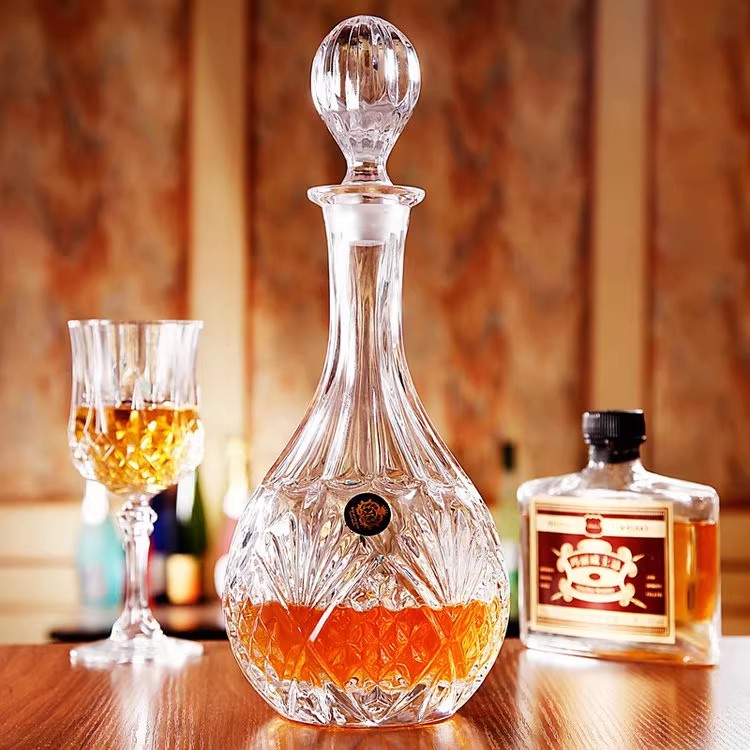When you think of whiskey, what comes to mind? Oak barrels, smoky flavors, and—of course—those iconic glass whiskey bottles clinking behind a bar. But have you ever wondered how glass became the go-to material for storing and showcasing whiskey? The history of glass whiskey bottles is packed with unexpected twists, from ancient craftsmanship to Prohibition-era bootlegging. Let’s dive into the fascinating story behind these transparent treasures and why they’ve become symbols of tradition, luxury, and rebellion.

1. The Ancient Origins: Glassmaking Meets Alcohol
Long before glass whiskey bottles existed, humans were already experimenting with glass. Around 3500 BCE, Mesopotamian artisans accidentally created glass while firing pottery. Fast-forward to 1500 BCE, and the Egyptians were crafting glass vessels for perfumes and oils. But it wasn’t until the Roman Empire that glassmaking truly advanced. Romans used glass to store wine, proving that glass containers could preserve—and even enhance—liquid treasures.
So, where does whiskey come in? Whiskey’s origins trace back to medieval monks in Ireland and Scotland, who stored their distilled spirits in clay jugs or wooden casks. Glass was rare and expensive, reserved for the elite. But as glassmaking spread across Europe, the idea of using glass whiskey bottles began to simmer—it just needed a few centuries (and a lot of innovation) to catch on.
2. The 18th Century: Birth of the Modern Glass Whiskey Bottle
The 1700s were a game-changer for glass whiskey bottles. Two key developments made this possible:
In 1821, the invention of the "blow-and-blow" glass molding machine revolutionized production. Bottles could now be made faster, cheaper, and with consistent shapes. This paved the way for iconic designs like the “shouldered” bottle (think Jack Daniel’s) and embossed logos that screamed authenticity.
3. Prohibition: How Glass Whiskey Bottles Went Underground
Here’s where things get juicy. During Prohibition (1920–1933), alcohol was banned in the U.S., but demand for whiskey skyrocketed. Bootleggers needed stealthy ways to transport hooch, and glass whiskey bottles became their secret weapon. Why? Glass was easy to hide (buried in fields, stashed in car doors), reusable, and less likely to leak than flimsy alternatives.
But there’s a twist: Many bootleggers reused bottles from pre-Prohibition brands, creating a black market for counterfeit labels. This led to a quirky side effect—today, antique glass whiskey bottles from this era are collector’s items, often selling for thousands at auctions. Who knew crime could be so lucrative?
4. Post-War Boom: Glass Whiskey Bottles as Status Symbols
After World War II, whiskey entered its golden age. Companies like Jim Beam and Maker’s Mark leaned into sleek, modern glass whiskey bottle designs to appeal to affluent consumers. Think bold labels, tapered necks, and glossy finishes. The message was clear: This isn’t just whiskey—it’s a lifestyle.
This era also saw the rise of limited-edition bottles. For example, in 1953, Glenfiddich released its first single-malt Scotch in a distinctive triangular glass whiskey bottle, designed to stand out on shelves. The strategy worked, proving that packaging could be as important as the liquid inside.
5. The Craft Revolution: Artistry Meets Sustainability
Today, glass whiskey bottles are experiencing a renaissance. Craft distilleries are pushing boundaries with hand-blown glass, quirky shapes (like skulls or rockets), and eco-friendly innovations. Brands like Buffalo Trace and Patrón now use recycled glass, while others experiment with lighter bottles to reduce shipping emissions.
But it’s not just about being green—it’s about storytelling. Take Jefferson’s Ocean, a bourbon aged at sea. Its glass whiskey bottle features wave-like textures, evoking the journey of the spirit inside. In a crowded market, these details make all the difference.

6. The Future of Glass Whiskey Bottles: Tech, Trends, and Timelessness
What’s next for glass whiskey bottles? Here are three predictions:
Despite new materials like aluminum or plastic, glass remains king. Why? It’s inert (no chemical reactions with whiskey), recyclable, and just plain classy. As one distiller put it: “Whiskey is history in a glass. The bottle should feel like history too.”
Conclusion: The Unsung Hero of Your Home Bar
Next time you pour a dram from a glass whiskey bottle, remember: You’re holding centuries of innovation, rebellion, and artistry. From ancient Mesopotamia to modern Brooklyn distilleries, these bottles have shaped how we enjoy—and idolize—whiskey. Whether you’re a collector, a casual sipper, or a history buff, there’s no denying the magic of that translucent vessel. So raise a glass (bottle included) to the unsung hero of your home bar!